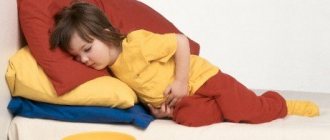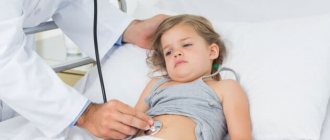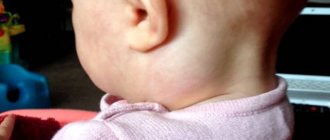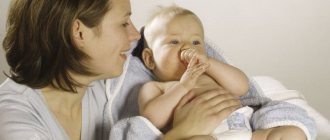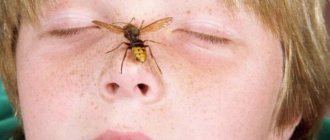06.11.2020 Alena Masheva Health
Colitis is considered one of the common ailments of the colon. The disease causes inflammatory-dystrophic changes in this organ. In newborns, the pathology leads to damage to the small intestine. Symptoms of colitis in children cause a lot of discomfort. This usually consists of problems with stool, abdominal pain, and malaise. The symptoms and treatment of intestinal colitis in children are described in the article.
About the disease
Colitis is an acute or chronic inflammatory process localized in the large intestine. It is accompanied by pain; the inflamed lining of the large intestine cannot fully cope with all its functional responsibilities. This is how intestinal dysfunction develops .
It is noteworthy that among young and adult people diagnosed with chronic colitis, in approximately every tenth, pathological changes in the condition of the colon began in childhood. And this is the main task of doctors - to detect pathology in time and prescribe the correct treatment.
In early childhood, the digestive organs have their own anatomical and functional characteristics. Therefore, colitis in its pure form does not occur so often. Usually the large intestine becomes inflamed at the same time as the small intestine, and then the disease is called enterocolitis. But already at school age, these two inflammatory processes increasingly occur in isolation from each other - there is only enteritis (inflammation of the lining of the small intestine) and exclusively colitis (inflammatory changes in the mucous membranes of the large intestine).
Common Causes
Considering that intestinal infections are more widespread in children, the most common cause of the disease is infection - this is how infectious acute colitis develops, and sometimes post-infectious colitis (developed as a complication after an intestinal infection). The inflammatory process in the large intestine can occur during illness with salmonellosis, dysentery, escherichiosis, rotavirus and enterovirus infection.
Most often, colitis accompanies acute gastritis against the background of an infectious disease, enteritis or gastroenteritis. All parts of the digestive tract communicate, they are interconnected, and therefore the inflammatory process that occurs in one part quickly spreads and reaches the large intestine.
A violation of the recommended therapeutic diet or intolerance to certain foods can provoke an attack of acute colitis in a child with allergies or a child with gastrointestinal diseases.
The danger of acute colitis is that the disease can become chronic; this most often occurs with colitis accompanying dysentery. A chronic process with inflammation and degenerative changes in the large intestine often develops against the background of prolonged helminthic infestation, parasites, and severe chemical poisoning.
Parents themselves can provoke colitis by giving their child unreasonably medications that the doctor did not prescribe. The most dangerous to intestinal health are non-steroidal anti-inflammatory drugs, laxatives, and antibiotics.
Experts have long noticed that the development of colitis is facilitated by psychogenic triggers , for example, increased sensitivity, prolonged chronic stress in a child. Also, colitis most often affects children born prematurely, with congenital gastrointestinal pathologies, as well as children with pathologies of the central nervous system, for example, with diagnosed cerebral palsy.
By middle school and adolescence, colitis begins in children who lead a sedentary lifestyle, spend a lot of time at computers, in front of the TV, against the backdrop of teenage bad habits . With some hormonal disorders, the development of a secondary form of the disease is possible - such colitis most often affects children with functional insufficiency of the thyroid gland.
Colitis in a child: symptoms, treatment and rules for eliminating discomfort
Colitis in a child may occur unexpectedly for parents.
With this disease, the epithelial layer of the intestinal mucosa is affected. We are talking about a gradual deterioration and loss of the volume of the shell, as well as its restoration characteristics. Due to food and the nuances of body structure, colitis is often observed in children. The risk of development cannot be excluded even in infants or kindergarteners.
What causes the disease
Acute colitis often develops against the background of a severe intestinal infection (escherichiosis, salmonellosis, rotavirus) and often occurs together with acute gastritis, enteritis or gastroenteritis. In some situations, the cause is individual intolerance to foods, too poor nutrition or radiation exposure.
Chronic colitis is a disease that develops as a consequence of acute colitis in children (often with dysentery in a child), as well as due to parasites in the body, constant violation of diet, contact with household chemicals, improper, unreasonable use of medications, secretory lack of digestive glands (both at birth and as a result of an acquired disease).
Active inflammation of the mucous membrane inside the intestine is helped by psychogenic factors, poor heredity, vegetative-vascular dystonia, peculiarities of organ development received at birth, a sedentary lifestyle, and bad habits at an early age.
Secondary colitis is diagnosed in a child due to endocrine diseases and ailments associated with the Central nervous system (CNS).
Symptoms
It is much more difficult to detect inflammation of the mucous membrane if the patient is too young. Often the symptoms of the disease are perceived by parents as a temporary illness.
This is especially typical for infants - the signs are too vague and closely resemble a standard intestinal disorder caused by a mild infection or a poor diet in the mother (during breastfeeding). Moreover, not only parents, but also experienced specialists can make mistakes.
In children over one year of age, it is easier to identify the disease, because the symptoms begin to become more pronounced. The behavior of a baby at this age makes it easier to find out what the cause of anxiety is.
Common symptoms for all patients include:
- Problems with bowel function. Digestion is often impaired, manifesting itself in different ways, sometimes in the form of alternating loose, frequent stools and constipation, which may not go away for days or weeks.
- Strong gas formation. Colitis in children undermines internal immunity, which leads to an imbalance of microflora. A large number of pathogenic microorganisms are found, which during life contribute to increased gas production. The abdomen gradually swells, the skin becomes tense, belching and gas are characteristic.
Most common symptoms
- Nausea and vomiting are symptoms characteristic of the initial stages of inflammation. In this way, the body tries to warn about the processes occurring in the intestines. Also, vomiting is not excluded in chronic colitis during an exacerbation.
- Impurities in stool (blood, mucus, pus, etc.). Sometimes the severity of the inflammation is too small and it is impossible to detect the inflammation with the naked eye. In such a situation, a laboratory stool test is prescribed.
- Dehydration is characterized by frequent and watery stools. Too much fluid comes out of the body along with stool. It is easy to determine dehydration by dry skin, acetone odor from the mouth, pale complexion, and weakness.
- Pain, mainly in the lower abdomen.
Important! The mucous membrane is an intestinal system endowed with a significant functional task.
It promotes easy and rapid absorption of nutrients. Therefore, degenerative processes can lead to vitamin deficiency and further damage to the skin, hair loss, and brittle nails.
In preschool and middle-aged children, a deficiency of vitamins and elements leads to a deterioration in thought processes: they suffer from poor memory, restlessness, short concentration, and inattention.
Children under one year of age experience frequent belching, nervousness, refusal to feed, crying, and pulling their legs toward their stomach.
Diagnostics
A comprehensive examination is important to determine the presence of colitis in children. During the procedure, special attention is paid to the differential diagnosis of childhood colitis. It is important to immediately cut off the possibility of developing more serious illnesses, such as diverticulitis or intestinal tuberculosis, formations (polyps, tumors, etc.), Crohn's disease, celiac disease.
To determine suspected colitis (chronic or other form of inflammation), the child is prescribed a whole range of laboratory and hardware procedures:
- Extensive blood test to determine the white blood cell count, hemoglobin level and red blood cell volume in the collection, as well as monitor changes in ESR and proteins;
- Colonoscopy - in the first stages of inflammation, it is necessary to detect swelling of the sensitive mucous membrane and a jump in temperature. At later stages, the usual picture is examined with the possibility of identifying erosive and ulcerative lesions that bleed a little if they come into contact with any object. No vascular pattern is found at the edge of the epithelial layer;
- Stool analysis helps to identify the presence of various impurities (streaks, clots, bile, etc.).
When during diagnosis it is possible to detect any formation - polyps of a single or multiple type, cysts - they are surgically removed and the samples are then sent for histology and biopsy. Such measures help eliminate the possibility of malignant tumors.
Treatment
Colitis in children three years of age and older can be treated largely through changes in diet and general routine. It is important to make the child feel better and reduce the frequency of seizures. For this purpose, a diet is prescribed that excludes dairy products and is rich in meat, fish, and eggs. Babies under one year old who are artificially fed are transferred to hypoallergenic lactose-free formulas.
If the baby is fed breast milk, everything is more complicated. Here the etiology of the disease is initially determined. Allergic colitis in an infant requires immediate transfer of the baby to artificial formula or the introduction of a strict diet for the mother.
A diet to cure colitis in older children requires, during moments of exacerbation, to completely exclude all foods that interfere with the food processing process, negatively affect the mucous membrane and increase gas formation.
“Prohibited” foods include flour delicacies, crackers and chips, salty and spicy foods, fast-food, carbonated sweet water, sauces and seasonings, preservatives, coffee, chocolate. It is also better to refuse or minimally reduce the amount of legumes, raw fruits and berries, fatty meats, yeast, rice and corn in the diet.
It is advisable to build a daily menu for colitis in a child. It should include soups based on boiled meat and vegetables, lean meat stews), porridge (buckwheat, pearl barley, rolled oats are recommended). Flour is not completely prohibited. Allowed are hard pasta, white bread made from rye flour, and bran rolls. Drinks made from herbs, tea, and jelly will be useful.
The diet for colitis in children is supported by medicinal substances. Therapy comes down to the use of oral medications that promote good digestion, protect and activate the regeneration of the mucous membrane of the cavity. Local treatment in the form of enemas has a beneficial effect.
Painkillers, laxatives or restorative drugs help relieve some of the symptoms. Antiviral and antibacterial substances, glucocorticoids, and antipyretics are also used. In very severe forms that cannot be treated with medication, resection is performed - amputation of a fragment of the intestine.
We must not forget about preventive measures, which include regular (once a year) medical examination. About drug therapy, proper nutrition, constant stable physical activity.
Complications
Ignoring the disease or delaying diagnosis can lead to a number of complications. We are talking about the development of hemorrhoids. Development of cracks in the anus, weakening of the muscles of the cavity. These lead to involuntary release of gases and uncontrolled bowel movements during bodily exertion, sneezing and coughing.
This is not all the dangers of “gravity” colitis in newborns. More serious options include intestinal cancer and diverticulitis, and blood loss. Problems of internal organs: gall bladder, liver, pancreas. Trophic type ulcers are not excluded.
Infectious colitis in newborns can lead to the spread of bacteria throughout the digestive cavity and then throughout the body. As a result, the child may develop complications in the form of stomatitis, sore throat, pneumonia or bronchitis.
No disease should be left without proper treatment. In children, colitis is a serious diagnosis, often leading to exacerbations, and is not easy to treat. Negligence leads to numerous complications requiring constant examination and therapy. However, with a responsible approach and compliance with all doctor’s instructions, inflammation becomes chronic. This type manifests itself in attacks and may not make itself felt for several years.
Source: https://gastritam.net/bolezni/kolit/u-rebenka.html
Types of illness
The inflammatory process in the large intestine can be small and large-scale. If only a few segments are affected, then the colitis is considered isolated; if the lesion covers the entire colon, then they speak of widespread colitis.
Depending on which segments of the intestine are affected, the isolated type of childhood colitis is as follows:
- typhlitis - an inflammatory process in the cecum;
- typhlocolitis is an inflammatory and degenerative process of both the cecum and ascending colon;
- transversitis - an inflammatory process in the transverse colon;
- angulitis - a process of inflammation in the isthmus between the transverse colon and descending colon;
- sigmoiditis – inflammatory changes in the sigmoid colon;
- proctosigmoiditis is a synchronous inflammatory process in the sigmoid and rectum;
- proctitis - an inflammatory process in the rectum;
- pancolitis is a generalized form.
After identifying the pathogen that caused the inflammatory changes, additional characteristics of the disease are given - it can be infectious (bacterial), nutritional, allergic, toxic, caused by parasites, pharmacological, neurotic (psychosomatic, psychogenic).
Depending on how severe the inflammation is and whether there are signs of degeneration of the membrane, the following are distinguished:
- catarrhal form;
- atrophic;
- erosive-ulcerative.
At a tender age, acute catarrhal, chronic colitis, nonspecific ulcerative colitis, and spastic colitis are very common. Also found are pseudomembranous colitis (developing with long-term treatment with antibiotics), hemorrhagic colitis (mainly bacterial with bleeding). The most severe is necrotizing colitis, in which the mucous membrane of the large intestine dies. Fortunately, this form of the disease does not occur so often in childhood.
A child has colitis, symptoms and treatment of colitis in children
The pathology occurs with severe pain, dyspeptic disorders, persistent changes in stool and general malaise. Treatment of colitis in children depends on the pathogenesis of the disease and includes a whole therapeutic complex: symptomatic and antibacterial treatment, diet therapy, herbal medicine and normalization of intestinal microflora.
Classification
Inflammatory-dystrophic changes in the large intestine can be limited, that is, they are localized within one or several segments, and widespread.
In this regard, the following are highlighted:
- typhlitis - isolated inflammation of the cecum;
- typhlocolitis - inflammation of the ascending and cecal colon;
- transversitis - inflammation of the transverse colon;
- angulitis - inflammation of the transverse colon and descending colon;
- sigmoiditis - inflammation of the sigmoid colon;
- proctosigmoiditis - inflammation of the sigmoid and rectum;
- Proctitis is inflammation of the rectum.
Depending on the cause of the disease, colitis can be:
- infectious;
- allergic;
- toxic;
- parasitic;
- medicinal;
- neurotic;
- secondary;
- unknown etiology.
According to the nature of the disease, colitis can be progressive, recurrent and latent. Based on the severity of the disease, mild, moderate and severe colitis can be distinguished. According to the clinical condition, the disease can be acute or chronic.
Cause of colitis in children
Colitis in children occurs for the following reasons:
- bacterial and viral infections: E. coli, salmonella, clostridia, etc.;
- congenital pathologies of the digestive organs;
- helminthic infestations;
- heredity;
- autoimmune diseases;
- tendency to allergic reactions;
- food poisoning;
- gross nutritional disorders: early introduction of complementary foods, replacement of breast milk and formula with whole milk, etc.;
- frequently repeated antibiotic therapy;
- unfavorable state of the environment;
- stress factors.
Symptoms
Symptoms of colitis in children in acute form manifest themselves in the form of nausea, weakness and elevated body temperature. The child complains of abdominal pain. Bowel movements occur up to 15 times a day. The stool is watery, greenish, mixed with blood. Symptoms of colitis in infants can be complicated by rectal prolapse and dehydration.
Symptoms of colitis in children in chronic form can worsen and subside depending on the phase of the disease and recovery.
The dominant symptoms of colitis in a child are abdominal pain, bowel problems such as diarrhea and constipation.
In some cases, there is a deterioration in the baby’s general well-being, exhaustion of the nervous system, headaches and chronic fatigue. Colitis can also cause lack of body weight, anemia and vitamin deficiency.
Features of the course of the disease in childhood
The clinical picture and causes of this disease in children differ significantly from adults, so the symptoms and treatment of intestinal colitis in children will be different.
Acute intestinal colitis in a child, the symptoms of which last more than two weeks, in case of ineffective treatment passes into the stage of chronic colitis. This condition is dangerous due to complications, for example, peritonitis, the development of adhesions, chronic diarrhea and much more. Therefore, treatment of symptoms of colitis in children should begin from the first days of the disease.
Acute colitis is most dangerous for children under one year of age. Allergic colitis is more common in infants, which develops in response to a certain type of allergen - lactose, a medication, a separate strain of bacteria, etc.
It is important to identify the allergen and eliminate it completely.
Otherwise, colitis in infants often leads to dehydration of the body against the background of repeated vomiting and diarrhea, followed by the development of seizures and even the death of the child.
Rehabilitation after treatment
During the period of remission, the following treatment and preventive measures are indicated:
- Breathing exercises, physical therapy, abdominal massage.
- Spa treatment.
- Prescription of preventive courses of probiotics and enzymes.
- Exemption from physical education and exams.
Forecast
Provided timely and successful treatment of the symptoms of colitis in children, as well as after full rehabilitation, the acute form of the disease ends in recovery.
In the chronic form of colitis, strict adherence to the regimen recommended by the doctor guarantees long-term remission. If, after treatment of colitis, a child experiences persistent remission, after 2 years he is removed from the gastroenterologist’s dispensary register.
Prevention
Prevention of colitis in a child is primarily aimed at normalizing the diet from the first days of life. It is errors in nutrition that most often become the cause of this disease.
Secondly, it is necessary to prevent any means of contracting intestinal infections. It is important to pay attention to personal hygiene, as well as food selection and handling.
Thirdly, preventive vaccination plays an equally important role in the prevention of colitis in infants and older children.
If, despite the efforts made, it was not possible to avoid the disease, then after treatment of colitis in children it is necessary to carry out secondary prevention, the purpose of which is to prevent relapse of the pathology.
Diet
Symptoms of intestinal colitis in a child require not only drug treatment, but also dietary therapy. The therapeutic diet for this disease excludes all types of food that can chemically or mechanically injure and irritate the inflamed intestinal mucosa. All food is consumed pureed, at least 5 times a day.
The diet for the treatment of symptoms of intestinal colitis in children does not recommend the consumption of milk and dairy products, legumes and cabbage. Meat, steamed fish and “yesterday’s” wheat bread are allowed. During the period of remission, the diet expands, but in the future you should exclude chilled foods, fermented milk products, sour foods, and limit salt intake.
It is important to remember that any form of colitis is dangerous due to the development of a chronic process with subsequent inflammation of the abdominal cavity and perforation of the intestinal wall.
All this is fraught with even greater complications, such as exhaustion of the body, anemia, and disruptions in the endocrine system.
Timely diagnosis and treatment of colitis is very important for a child, since an untreated disease in childhood can cause his suffering and problems with the functioning of the digestive system for the rest of his life.
Olga Rogozhkina, doctor, specially for Zhkt.ru
How to recognize?
A baby with acute colitis caused by infections is usually accompanied by signs of intoxication - the child has a high temperature, is weak, and feels nauseous. When the intestinal mucous membranes become inflamed, spasms begin, as a result of which the baby complains of abdominal pain and the urge to defecate, which may well be false.
Diarrhea can recur from 5 to 15 episodes per day . Fecal masses with inflammation in the large intestine have a watery structure, they are foamy, have an unpleasant odor, often greenish, dirty-brown, impurities of mucus are clearly visible in them, and in the hemorrhagic form, inclusions of blood.
The urge to defecate can be so frequent and strong that the development of complications in the form of rectal prolapse is possible.
But the main danger of colitis in its acute form lies not even in this, but in the possibility of dehydration. It is from this that most often death occurs in intestinal infections. The younger the child, the faster dehydration occurs . The baby's facial features become sharper, the baby is thirsty, he is very weak, the skin loses its elasticity, the lips, tongue and mucous membranes are dry. With severe loss of fluid, delirium, loss of consciousness, and convulsions are observed. Acute severe colitis is especially dangerous for infants and newborns.
You can suspect chronic colitis in a child by the characteristic alternation of periods of exacerbation and calm. Inflammation of the large intestine will manifest itself mainly as pain in the abdomen and upset stool.
It hurts mainly in the area near the navel, the pain is aching, unexpressed, and most often appears a short time after eating. Constipation may alternate with diarrhea. Fecal masses have the characteristic appearance, smell, color and consistency described above. In children prone to constipation, cracks may form in the anus.
Children with chronic forms of colitis slowly gain weight and often do not reach the age norm. They often complain of headaches, weakness, get tired quickly, and have trouble sleeping at night.
Colitis in children
Colitis in children is a polyetiological disease of the colon, accompanied by inflammatory-dystrophic changes. Colitis in children occurs with abdominal pain, nausea, changes in the frequency and nature of stool, and malaise. Diagnosis of colitis in children includes scatological and bacteriological examination of feces, irrigography, rectosigmoidoscopy and colonoscopy, endoscopic biopsy of the intestinal mucosa. Treatment of colitis in children largely depends on its pathogenetic form and includes diet therapy, antibacterial and symptomatic therapy, herbal medicine, and restoration of normal intestinal microflora. Symptoms of colitis in children
General symptoms:
- Abdominal pain, usually on the left side, and is associated with defecation (usually goes away after bowel movement).
- Flatulence (bloating due to increased gas production).
- Bowel disorders: Constipation (more often).
- Diarrhea.
- Constipative diarrhea (after a long absence of stool, a dense fecal plug is released, followed by liquid or pasty stool).
- There may be mucus and blood in the stool.
Acute infectious colitis in children occurs against the background of severe toxicosis and exicosis: fever, anorexia, weakness, vomiting.
As a result of intestinal spasm, the child experiences pain in the iliac region and tenesmus. Bowel movements become more frequent from 4-5 to 15 times a day; stools are watery, foamy in nature; greenish color, mixed with mucus and streaks of blood. During bowel movements, rectal prolapse may occur. When examining a child with acute infectious colitis, pay attention to signs of dehydration: decreased tissue turgor, dry mucous membranes, sharpening of facial features, oliguria. Chronic colitis in children has an undulating course with alternating exacerbations and remissions. The main clinical manifestations of colitis in children are pain and bowel dysfunction. The pain is localized to the navel, right or left iliac region; have an aching character; occur after eating, worsen during movements or before defecation.
Stool disorder in chronic colitis in children can be expressed by diarrhea, constipation, or their alternation. Sometimes there is an increase in the urge to defecate (up to 5-7 times a day) with the release of feces of various types and consistencies (liquid, with mucus or undigested food, 'sheep' or ribbon-like feces, etc.). Constipation in children with subsequent passage of hard stool can lead to the formation of fissures in the anus and the appearance of a small amount of scarlet blood in the stool.
Children with chronic colitis complain of bloating and distension of the abdomen, rumbling in the intestines, and increased passage of gases. Sometimes psychovegetative disorders dominate in the clinic of colitis in children: weakness, fatigue, irritability, sleep disturbance, headache. Long-term course of colitis in children can lead to delayed weight gain and growth, anemia, and hypovitaminosis.
Chronic colitis in children requires differentiation from celiac disease, cystic fibrosis, intestinal dyskinesia, chronic appendicitis, enteritis, diverticulitis, and Crohn's disease.
Treatment of colitis in children
Treatment of colitis in children is aimed at eliminating the pathogen, restoring intestinal function, and preventing relapse or exacerbation. In all cases of colitis in children, a mechanically and chemically gentle diet is prescribed: weak broths, mucous decoctions, steam dishes, omelettes, porridges, jelly.
Treatment of acute infectious colitis in children is carried out according to the rules for the treatment of intestinal infections (antibiotic therapy, oral rehydration, administration of bacteriophages, enterosorbents, etc.).
For chronic colitis in children, in addition to therapeutic nutrition, the use of enzyme preparations (Pancreatin), prebiotics and probiotics (Acipol, Linex, Hilak-Forte), enterosorbents (Smecta), prokinetics (loperamide, trimebutine) is indicated. Antibacterial drugs are prescribed according to strict indications. As part of the treatment of colitis, children are recommended to drink still mineral water, infusions and decoctions of medicinal herbs. If necessary, the complex of therapeutic measures includes IRT, physiotherapy (electrophoresis, mud therapy, warm compresses on the abdominal area), abdominal massage and therapeutic exercises.
During an exacerbation, a mechanically and chemically gentle diet is prescribed: white crackers, weak broths with the addition of mucous decoctions, steamed dishes from minced meat, porridge, soft-boiled eggs, omelettes, jelly. If the condition improves, the diet is expanded and vegetables and fruits are allowed. If you are prone to constipation, beets, carrots, plum and apricot juices, apples, and bread with a high bran content are introduced into the diet. When alternating diarrhea and constipation, milk wheat bran is prescribed in a dose of 1 tsp. 3 times a day. Mineral waters (Essentuki No. 17) are also prescribed, 1/3-1/2 glass before meals.
In the presence of loose stools, astringents are prescribed, especially herbal decoctions, including chamomile, St. John's wort, oak bark, and pomegranate. A course of 1 month of 1 tsp is recommended. 5-6 times a day. The grass is changed every 10 days.
In order to restore the permeability of cell membranes and stimulate normal microflora, vitamins C and group B are prescribed for a course of 10-15 days.
What to do?
Colitis is a serious condition, and self-medication is unacceptable. If the described signs are detected, parents must take the child to the doctor. If symptoms are observed in a child under 1 year of age, you must call an ambulance . The diagnosis is made after laboratory microscopic examination of vomit, stool, blood tests and endoscopic examination.
Almost always, the level of hemoglobin in the blood of a baby with colitis is reduced, and a biochemical blood test shows an imbalance of electrolytes.
Before the ambulance arrives, the children are not given any medicine. The exception is high temperature (above 38.0 degrees). In this case, you can give one age-specific dose of antipyretics.
How to treat?
Treatment of the disease requires eliminating the cause of the inflammatory process and restoring normal functioning of the large intestine. Regardless of what causes the disease, a special diet is recommended for the baby, which will not create an increased load on the digestive organs - these are weak “secondary” broths, “mush” porridges, omelettes, jelly.
If colitis is infectious or parasitic, appropriate medications are prescribed. For bacterial forms of the disease, antibiotics are taken. If helminthic infestations are detected, treatment is carried out with drugs against parasites.
To restore the lost water-salt balance, it is recommended to give the child plenty of “Regidron” and “Smecta” to drink. If the child’s condition is serious or due to his age it is not possible to give him something to drink, the baby is hospitalized and electrolyte solutions are administered intravenously.
For children with a chronic form of the disease, a strict diet is recommended not only at the time of exacerbation, but also at the rest of the time . To restore intestinal function and prevent recurrent attacks, enzyme preparations, probiotics, and enterosorbents are recommended. Clinical guidelines suggest prescribing physical therapy after the attack has stopped.
If treatment is carried out on time and correctly, the prognosis for acute colitis is always favorable. The chronic form, subject to diet and medical prescriptions, has every chance of occurring with long periods of remission.
After an acute illness, it is advisable for the child to be observed by a pediatric gastroenterologist for some time. Usually, if attacks do not recur for 2 years or more, the child is removed from the register.
medical reviewer, psychosomatics specialist, mother of 4 children
Any illness in a child is a cause for concern for parents. Colitis in a child is one of the most common diseases, so getting more detailed information about its symptoms, treatment methods and possible negative consequences will be useful for many parents.
Colitis is a problem that many children face
Types of colitis
Colitis is an inflammation of the large intestine, accompanied by pain and functional disorders of the colon. Experts say that more than 10% of the total number of cases of chronic colitis begins in early childhood.
Since inflammatory processes of the colon can be widespread or limited to one or several segments, the following classification of the disease is widely used:
- isolated inflammation of the cecum;
- inflammation of the cecum and ascending colon;
- inflammation of the transverse colon;
- inflammation of the transition of the transverse colon to the descending colon;
- inflammation of the sigmoid colon;
- inflammation of the rectum and sigmoid colon;
- inflammation of the rectum;
- generalized inflammation.
According to etiological indicators, childhood colitis is divided into the following types:
- infectious;
- nutritional;
- parasitic;
- toxic;
- medicinal;
- radial;
- neurotic;
- unknown origin.
Causes of the disease
Despite the fact that for a disease such as colitis in an infant, the symptoms are practically the same, regardless of the cause of the pathology, different treatment methods are used.
Infectious lesion
The main provocateurs of the inflammatory process in the large intestine in children who are barely a month old are bacterial and viral infections, as well as parasitic worms. Most often, infants suffer from colitis due to a banal lack of immunity to pathogens.
Most often, acute colitis of the large intestine in infants occurs for one of the following reasons:
- coli;
- salmonella;
- dysentery;
- rotavirus infection;
- worms.
Important! An infant can easily become infected with infectious colitis from an adult who is an asymptomatic carrier of the infection (for example, from the mother through breast milk).
Non-communicable causes
Colitis is not a reason for panic on the part of parents
In some cases, the causes of colitis are non-contagious. This category includes:
- long-term treatment with antibacterial and anti-inflammatory drugs;
- allergic reaction and hypersensitivity;
- chronic non-compliance with the diet of a child or nursing mother;
- exposure to toxic substances;
- congenital or acquired metabolic disorders;
- nervous tension (including psycho-emotional);
- pathologies of development of the organs of the digestive system.
Development of the disease
To effectively treat colitis, it is important to recognize the disease as early as possible. To do this, you need to know how and when it arises and develops.
Colitis can occur in a child at any age from birth. Since in early childhood the digestive organs have a large number of both functional and anatomical features, the disease in its pure form does not occur very often. As a rule, in very young children the large intestine becomes inflamed in parallel with the small intestine.
An infant with acute colitis usually shows typical signs of intoxication: his body temperature rises, nausea and weakness are observed. When the intestinal mucosa is inflamed, colitis in a child is accompanied by a symptom such as spasms. His stomach hurts and diarrhea can be repeated up to 15 times during the day.
The main danger when a newborn gets colitis is the possibility of dehydration. The younger the baby, the faster he becomes dehydrated. In the case of intestinal infections, it is this that most often turns out to be the cause of death. At the first suspicion of illness, it is recommended to call an ambulance. The sooner treatment is started, the more likely a favorable outcome of the disease is.
Treatment and prevention
Treatment of colitis in children under three years of age and older is carried out to a large extent by normalizing the diet and diet. To alleviate the child’s condition and reduce the intensity of symptoms, a dairy-free diet enriched with meat, fish, and eggs is prescribed. Artificial children up to one year old are transferred to lactose-free hypoallergenic milk formula.
In the case of breastfed children, identifying the etiology of the disease is of great importance, since some cases of allergic colitis require an urgent transfer of the child to artificial nutrition or a strict diet for the nursing mother.
From the diet of older children during periods of exacerbation, it is necessary to exclude all foods that complicate the digestion process, corrode the walls of the mucous membrane, and contribute to increased gas formation.
Such products include flour sweets, chips, crackers, salty and spicy crackers, all fast food, sweet carbonated drinks, mayonnaise, ketchup, store-bought and homemade pickles and preserves, cocoa, coffee, chocolate. It is necessary to minimize the consumption of legumes, raw fruits and berries (apples, grapes, plums, peaches, bananas, currants, raspberries, etc.), fatty meats, yeast baked goods, corn and rice cereals.
The basis of the menu should be soups based on boiled vegetables and meat, stewed and boiled beef, rabbit, chicken, turkey, porridge (especially oatmeal, buckwheat, pearl barley). For flour products, you can eat hard pasta, rye and slightly dried white bread, and bran buns. Herbal drinks, jelly, black and green teas are useful.
Drug treatment for colitis involves taking oral medications that improve digestion, protect and restore the intestinal mucosa. Local therapy in the form of therapeutic enemas helps well. Taking painkillers, laxatives or restoratives, antiviral and antibacterial drugs, glucocorticoids, and antipyretics will help relieve symptoms. In the most severe cases, which are not amenable to conservative therapy, resection is performed - removal of a section of the intestine.
Preventive measures include annual medical examination with mandatory drug treatment, maintaining proper nutrition, and moderate physical activity.
Symptoms
For a disease such as intestinal colitis, the symptoms in a child are quite typical.
Temperature
As with any other inflammatory process, colitis in children increases body temperature. If it does not exceed 38 degrees, you should not give antipyretics - the body is fighting the infection, you should not disturb it. If a child develops a fever and the thermometer scale is inexorably creeping up, it is permissible to give the baby any fever-reducing drug with an age limit of 0+.
Important! Having discovered that the temperature remains at the same level, despite taking an antipyretic, you should not delay calling an ambulance or a doctor at home.
Nausea and vomiting
Nausea and vomiting are two other symptoms that often accompany colitis. These symptoms are complicated by heaviness and pain in the abdominal area. Despite parents' concerns, vomiting is not a dangerous sign of the disease. It is rather a protective reaction of the body, allowing it to effectively get rid of toxins.
Greenish color of feces
Greenish stool in young children is another pathological symptom of colitis that should not be ignored. Most often, this shade of feces indicates that the disease has developed against the background of dysentery, salmonellosis, food poisoning and some other reasons.
Diarrhea
Often diarrhea also indicates that the child has colitis. When these symptoms appear, it is recommended to take special solutions that protect the baby’s body from dehydration. We are talking about drugs such as Regidron and Oralit. Before giving your child medications, you should always consult a doctor.
Diagnosis of the disease
Before starting treatment for colitis, it is necessary to confirm the presence of the disease. This should be done by an experienced doctor who knows his business well.
Since children cannot speak, parents need to understand by their behavior what hurts them
To diagnose intestinal inflammation in a child, it is important to determine the stage of development of the process, the location of the disease, as well as the degree of damage to the mucous membrane. It is necessary to distinguish the symptoms of colitis from signs of other diseases.
The following procedures help a specialist establish an accurate diagnosis:
- external examination of a small patient;
- general blood analysis;
- Analysis of urine;
- blood chemistry;
- examination of stool for the presence of dysbacteriosis and worm eggs;
- plain radiography;
- intestinal endoscopy;
- sigmoidoscopy;
- colonoscopy;
- irrigoscopy.
Stool analysis
If colitis is suspected, a stool test can be taken for fiber content, qualitative changes in microflora, lamblia, and worm eggs. If motor intestinal functionality is impaired and putrefactive and fermentative dyspepsia begins to develop, changes will be visible in the macroscopic properties of feces and their chemical composition.
With colitis, additional symptoms are necessarily present
Sigmoidoscopy
Sigmoidoscopy includes examination of the anal canal, rectum and lower third of the sigmoid colon. This diagnostic method is relatively painless, and therefore is often used when examining young patients.
Colonoscopy
Colonoscopy is another examination that is prescribed if colitis is suspected. This is one of the most informative ways to diagnose the large intestine. For this purpose, a special device is used - an endoscope, which allows you to examine the intestine from the inside.
Irrigoscopy
Irrigoscopy is a fairly effective examination method in terms of making a diagnosis. It allows you to get a detailed picture of the condition of the small intestine, rectum and colon. The procedure uses the Bobrov apparatus, which is a very simple design to use.
Treatment and drugs
Treatment for colitis is carried out in the following areas:
- elimination of infection;
- replenishment of lost fluid;
- normalization of stool;
- restoration of intestinal motility;
- preventing exacerbation.
To eliminate the pathogen, antibiotics are used, the water-electrolyte balance is restored using Regidron, Gatrolyte or Oralite. To treat intestinal dysbiosis, probiotics and prebiotics are prescribed. Dietary meals are prescribed according to the child’s age. When it comes to infants, it is recommended that they be breastfed for as long as possible.
An experienced specialist should diagnose colitis
Features of the treatment of enterocolitis in infants
Given the pathogenesis of enterocolitis, appropriate treatment should be carried out. An important condition is the prevention of infectious complications and perforation. To do this, you need to stop eating, it all depends on the severity of the disease. Sometimes only parenteral feeding is allowed. Pathology therapy is aimed at eliminating symptoms, the main pathogen, as well as preventing complications and undesirable consequences.
Treatment methods for enterocolitis in newborns:
- strict diet therapy;
- taking medications;
- surgical intervention (necrotic form of the disease).
The therapeutic course scheme is selected individually, since it is necessary to take into account the results of laboratory tests and instrumental diagnostics, as well as the general condition of the child.
Nutrition correction
Diet is the main stage in the treatment of enterocolitis. It is important that the diet replenishes the deficiency of fluid and vitamins in the body. The main method of therapy for children under three years of age is considered to be strict, balanced diet therapy. As for food, it should be in a puree form, it should be cooked exclusively by steaming or boiling. Eat small meals about six times a day. The introduction of complementary foods and new foods is strictly prohibited. Sweetened water, breast milk and some formulas are allowed. If we are talking about premature babies, then they are fed intravenously to relieve the load on the gastrointestinal tract.
Medications
Treatment with drugs involves the use of antibiotics, since the main factor in the development of the disease remains the bacterial inflammatory process that occurs in the intestinal walls. In parallel, infusion therapy is carried out; at the end of the course, probiotics are prescribed to normalize the microflora and eliminate the irritating effect of other medications.
Among antibiotics, preference is given to the ampicillin series:
- Amikacin;
- Ampisulbin;
- Imipenem.
Most popular probiotics:
- Prema;
- Enterozermina.
Vitamins can be taken only after complete recovery, but they should not irritate the intestines. Enterocolitis may cause diarrhea, constipation, and indigestion. As for traditional treatment, it is not used for newborns.
Preventive measures
To prevent colitis in an infant, you should adhere to the following simple rules:
- provide your baby with a healthy diet, balanced and rich in vitamins;
- promptly treat diseases of infectious origin;
- vaccinate your child against infections;
- Do not give your baby medicine unless absolutely necessary;
- protect your baby from stress.
If parents monitor their child's health, many problems, including colitis, can be avoided.
Prevention
The main condition for prevention is diet. The menu should be selected based on the child's age. Colitis in newborns occurs due to poor nutrition of the mother, so the woman should follow the diet prescribed by the doctor.
In addition to restoring the child’s diet, it is necessary to regularly visit the pediatrician, which will allow timely detection of the disease. It is important to give up bad habits (for teenagers). Antibiotics and other medications should not be given without a doctor's prescription. Timely treatment of helminthic infestations, dysbacteriosis and intestinal infections is also required. Following the rules of prevention will help prevent such an unpleasant disease as colitis.
Source: fb.ru
Diseases and conditions
Causes of colitis in children
In recent years, chronic diseases of the digestive system in children have increased significantly. About 20% of them are colitis - structural changes in the mucous membrane of the large intestine. It is accompanied by inflammatory processes and a characteristic clinical picture: pain in the abdomen, flatulence, stool disturbances, etc. Colitis in infants (up to 1 year of age) is called enterocolitis. In newborns, the disease often affects both the small and large intestines.
Doctors are unable to find out what causes enterocolitis in a child in the first months of life. It is known that allergic colitis in infants is associated with the inadequacy of some food products for the age category and its low quality. Inappropriate food and non-compliance with feeding regimens often cause allergies, which provoke colitis in infants. Among the factors of colon dysfunction in older children are:
- Acute intestinal infections. Dysentery, salmonellosis, etc. often cause dysfunction of the digestive organs.
- Intestinal infestations by worms. Parasites disrupt metabolic processes in the body, the functioning of the gastrointestinal tract, and destroy the epithelial layer of the intestinal walls.
- Increased emotional excitability, stress, and vegetative-vascular dystonia can provoke irritable bowel syndrome.
- Congenital intestinal anomalies, other pathologies caused by heredity.
- Radiation sickness as a consequence of radiation.
- Dysbacteriosis after unwise use of antibacterial, laxatives, and hormonal drugs.
- Deterioration of the local environmental situation.
- Gross violations of the rules of nutrition for infants: unreasonably early introduction of complementary foods, feeding newborns with whole milk.
- Autoimmune diseases. In some cases of malfunction, the child’s immune system fights its own organ tissues, destroying them.
- Allergies to drugs or food. Often the baby’s body reacts very sharply to certain bacteria entering the intestines from the outside. Medications used to treat various diseases disrupt the intestinal microflora.
Symptoms of colitis in newborns
The clinical picture of the disease may indicate colic, which quite often bothers infants. Despite this, in case of constant drowsiness, lethargy, tearfulness and fatigue, you should carefully look at such signs and contact your pediatrician. Timely diagnosis and therapy will help avoid complications that affect the quality of life.
Signs begin to appear from the second week of life, but may also bother you in the first 3 months. This is due to the age and weight of the baby; the smaller they are, the later the inflammatory process can be recognized.
Doctors distinguish several types of enterocolitis:
- fulminant;
- subacute;
- spicy.
As for the lightning stage, it makes itself felt on the third to fifth day of life. It manifests itself against the background of intestinal pathologies; symptoms develop very quickly, which can cause death.
The acute form can develop over several days and is characterized by consistency. First of all, the mucous membrane of a specific part of the intestine is damaged. In this area, blood circulation is impaired, and this is a provoking factor for increased ischemia. After this, the process covers the distal parts of the intestine, which worsens the clinical picture. The last stage is accompanied by the formation of necrotic areas throughout the intestine, causing its perforation.
Subacute enterocolitis manifests itself with a gradual increase in the listed symptoms. Abdominal bloating occurs periodically, and poor weight gain is observed. Prolonged inflammation can cause intestinal obstruction, which can have more serious consequences and even death.
Against the background of the inflammatory process, an ulcerative form of the disease develops. It is interesting that the deformation can have different depths, and there is a risk of subsequent perforation. The causative agent is staphylococcus, which is manifested by improper absorption, dehydration, diarrhea and vomiting, and weight loss. Enterocolitis in a newborn is accompanied by severe and painful bloating.
The symptoms of the pathology are as follows:
- excessive gas formation;
- anemia;
- irritability, lethargy, fatigue and tearfulness;
- painful stomach;
- disruption of normal sleep;
- too frequent regurgitation;
- mucous, liquid stool, sometimes you can see streaks of blood;
- frequent urge to defecate, diarrhea;
- against the background of the inflammatory process, body temperature may rise.
It is important to note that enterocolitis in infants develops suddenly and mainly occurs in the form of an exacerbation. If the pathology is chronic, the child gains weight poorly and is stunted in growth, there is a deficiency of minerals and a disorder of protein metabolism. The most common form of pathology is necrotizing enterocolitis. It develops due to improper blood circulation in the intestinal area, against the background of bacterial infections and damage to the mucous membrane of the digestive organ.
Symptoms of necrotizing enterocolitis:
- hypoxia;
- apnea;
- bloated stomach;
- presence of pain during palpation;
- vomiting with blood, bile;
- slow heartbeat.
The necrotizing type of the disease is accompanied by the formation of necrosis in the intestine. That is why symptoms and treatment are prescribed exclusively by a doctor; you cannot self-medicate.
Types of colitis in children
The types and forms of the disease are varied. Colon dysfunction in adults and children differs little in clinical course and etiology. Pediatric colitis is classified according to:
occurs suddenly due to infection of the large intestine
chronic or monotonous
periods of exacerbation are replaced by remission, long-term manifestations
diagnosed against the background of other chronic diseases of the gastrointestinal tract (gastritis, cholangitis, etc.)
periodically resumes after treatment
does not appear temporarily
formed when the mucous membrane of the colon is damaged by viruses, pathogenic flora
modification of organ tissue occurs due to the harmful activity of worms
provoked by a violation of the blood supply to the tissues and organs of the digestive system
caused by exposure to radioactive substances
manifests itself due to stress
develops under the influence of toxic substances
the cause of the disease is the detrimental effect of medications on the functioning of the intestines
the formation of ulcers and erosions on the intestinal mucosa is hereditary
dysfunction of large intestinal motility is expressed by spasms and pain,
nutritional or mechanical
formed when the mucous membrane of the large intestine is injured by hard fecal deposits during constipation
initial stage of exacerbation of the disease
the cause of the disease is unknown, its clinical course does not fit any description of known types of colitis
susceptible to pathological changes:
right-sided or typhlitis
cecum and ascending colon
rectus and sigmoid divisions
inflammation of the colon throughout
the inflammatory process affects the area of the junction of the transverse colon and descending intestine
changes in the mucous membrane
there are minor defects in the intestinal mucosa similar to gastritis on the walls of the stomach
characterized by deep destruction of the intestinal lining by ulcers
necrosis of some areas and damage to blood vessels develops
Symptoms
It is very important to consider the first symptoms of a dangerous disease. Spastic colitis in children manifests itself in the form of bloating, gas formation, and frequent intestinal rumbling. These manifestations are accompanied by pain in the iliac region. The baby becomes weak, his temperature may rise, and he may vomit. There is a disturbance in the process of defecation: frequent liquid, foamy stools with mucus (blood). Due to dehydration of the body, dryness of the skin and mucous membranes increases.
Acute colitis in a child caused by an intestinal infection develops rapidly. Defecation becomes more frequent up to 4-15 times a day, stool becomes liquid, greenish in color, foamy structure with streaks of blood. Body temperature rises sharply. The patient complains of spasmodic colic in the abdomen. A reflex eruption of stomach contents is possible. The turgor of the cells of the integumentary tissue decreases, the mouth feels dry, facial features become sharper, and the baby loses weight. At the slightest suspicion of a disease, you should immediately seek medical help.
Colitis in children: causes of the disease, main symptoms, treatment and prevention
It is a polyetiological lesion of the colon, which is accompanied by the development of inflammatory-dystrophic changes in this anatomical area.
Causes
In most cases, the acute form of colitis in children occurs against the background of an intestinal infection, such as salmonellosis, shigellosis, escherichiosis, yersiniosis, foodborne illness, rotavirus infection.
Most often, colitis is combined with acute inflammation of the gastric or intestinal mucosa.
In rare cases, acute colitis develops in children against the background of individual food intolerance, severe dietary violations, and the influence of gamma radiation.
The chronic form of colitis can be a consequence of acute colitis, and also occur against the background of parasitic and helminthic infestations, systematic violations of the diet, the influence of household poisons, incorrect use of medications, secretory deficiency of digestive enzymes and dysbiosis.
Triggers for the occurrence of inflammatory damage to the intestinal mucosa can be psycho-emotional experiences, vegetative-vascular dystonia, which is burdened by genetic abnormalities in the development of the intestinal tube, physical inactivity, as well as bad habits in childhood and puberty. The development of secondary colitis in children is quite often observed with disorders of the endocrine system or lesions of the central nervous system, such as myasthenia gravis or cerebral palsy.
Symptoms
The acute form of infectious colitis is accompanied by the development of severe intoxication and severe dehydration, anorexia, hyperthermia, vomiting and loss of strength. Against the background of intestinal spasm, the baby may experience pain in the iliac region and tenesmus.
The child has frequent stools from 4 to 15 times a day, and the stools are foamy, watery, greenish in color and contain streaks of blood and mucus.
During a physical examination of the child, attention is drawn to signs of dehydration, manifested by a decrease in skin turgor, increased dryness of the mucous membranes, a decrease in the amount of urine and sharpening of facial features.
The clinical picture of the chronic form of the disease is characterized by an undulating course, caused by alternating periods of remission and exacerbations.
The main signs of the disease in children are pain and impaired bowel movements.
Localization of pain is noted in the navel, in the left or right part of the iliac region, which can be aching in nature and appear or intensify after eating, before defecation or during movement.
Abnormal bowel movements in the chronic form of the disease are manifested by constipation, diarrhea, and their alternation. Some patients experience an increase in the urge to defecate up to 7 times a day with the release of feces of varying consistency. Quite often in children, constipation can lead to the appearance of fissures in the anus and a small amount of scarlet blood in the stool.
Babies with a chronic form of colitis may suffer from flatulence, a feeling of fullness in the abdomen, increased passage of gases and rumbling in the abdomen.
In rare cases, the clinical picture in children may be dominated by psychogenic disorders, such as fatigue, weakness, increased irritability, headaches and sleep disturbances.
If the disease lasts for a long time, it can cause the child to develop delayed weight gain, hypovitaminosis and anemia.
Diagnostics
When making a diagnosis, the data of the anamnesis, physical examination and laboratory and instrumental examinations must be taken into account.
To confirm the diagnosis, the child is prescribed general and biochemical blood tests, stool analysis for dysbacteriosis and coprogram, as well as endoscopic research methods, such as colonoscopy or rectoscopy; in severe cases, irrigography may be required.
Treatment
Colitis therapy is aimed at eliminating the pathogen, restoring intestinal function, and preventing relapses. The patient is prescribed a diet based on the intake of mechanically processed and chemically non-aggressive food.
From medications, the child receives antibiotics, oral rehydration agents, bacteriophages, prebiotics and enterosorbents.
Prevention
Prevention of the development of colitis in children is based on adherence to a correct diet and nutrition regimen, as well as timely treatment of acute intestinal infections, helminthic infestations and dysbacteriosis.
Source: https://www.obozrevatel.com/health/bolezni/kolit-u-detej.htm
Diagnostics
Diagnostic methods allow us to identify the cause of colitis in children. The diagnosis is based on the following studies:
- Anamnesis. Questioning the patient and people who know him to obtain the necessary information.
- Blood analysis. Data from the results of laboratory tests often reveal anemia in the patient, insufficient levels of electrolytes in the blood serum, and hypoalbuminemia.
- Scatological. Fecal analysis indicates the efficiency of the gastrointestinal tract (gastrointestinal tract): the speed and quality of food digestion. This method is able to detect increased levels of leukocytes in the stool, steatorrhea (fat), starchy substances, etc.
- Bacteriological. The infectious nature of the disease is confirmed or refuted by laboratory testing.
- Analysis of stool for dysbacteriosis. The species composition of the intestinal microflora, quantitative indicators of the presence of pathogenic microorganisms (staphylococci, candida, etc.) help determine subsequent measures of drug treatment for the patient.
- Endoscopic. Using various types of endoscopes (special devices), the internal cavity of the intestine is examined to determine the location of the disease, the presence of inflammatory, erosive, and degenerative processes:
- Rectoscopy is an examination of the rectum using an endoscopic tube.
- Colonoscopy is a diagnostic method using a long flexible probe.
- Biopsy of the mucous membrane - sampling of material (biopsy) with special biopsy forceps for histological examination.
- Irriographic. The method of radiographic examination of the severity of colitis is called irriography. Specialists examine the organ using X-rays after cleansing the colon and filling it with a radiopaque substance.
- X-ray of barium passage. An X-ray examination is carried out one day after taking the barium suspension. It is used to determine the evacuation capacity of the large intestine.
Causes
The development of the disease is influenced by a combination of negative, both exogenous (external) and endogenous (internal) factors.
These include:
- congenital predisposition;
- fetal pathologies;
- improper diet;
- poor quality diet;
- infection with intestinal parasites;
- predisposition to allergies;
- intestinal infections;
- infection of the digestive tract with the bacterium Helicobacter pylori;
- uncontrolled use of antibacterial and other drugs;
- intestinal dysbiosis.
Colitis in children under one year of age most often develops against the background of congenital malformations of the gastrointestinal tract with the addition of frequent viral infections, a tendency to allergies and lactose intolerance. In the case of formula-fed children, risk factors also include incorrect selection of formula.
Treatment of colitis in children
For infectious colitis, a course of antibiotics is prescribed. At the same time, adsorbing drugs such as activated carbon, Chitin, Polysorb are prescribed. When spasms occur, it is permissible to use no-spa, but not earlier than half an hour after taking absorbents.
Intestinal antiseptics suppress the development of pathogenic microorganisms, while bacteria beneficial to humans are not affected by drugs. The best of them: Intetrix Nifuroxazide. There are complex medications that exhibit adsorbent and antiseptic properties at the same time: Enterosgel, Smecta.
In case of diarrhea, it is necessary to take special solutions that will protect the baby’s body from dehydration: Oralit, Regidron. It must be remembered that any prescription of medications should only be done by a doctor. Self-medication leads to negative consequences. A pediatrician or pediatric gastroenterologist treats colon dysfunction using several groups of medications:


